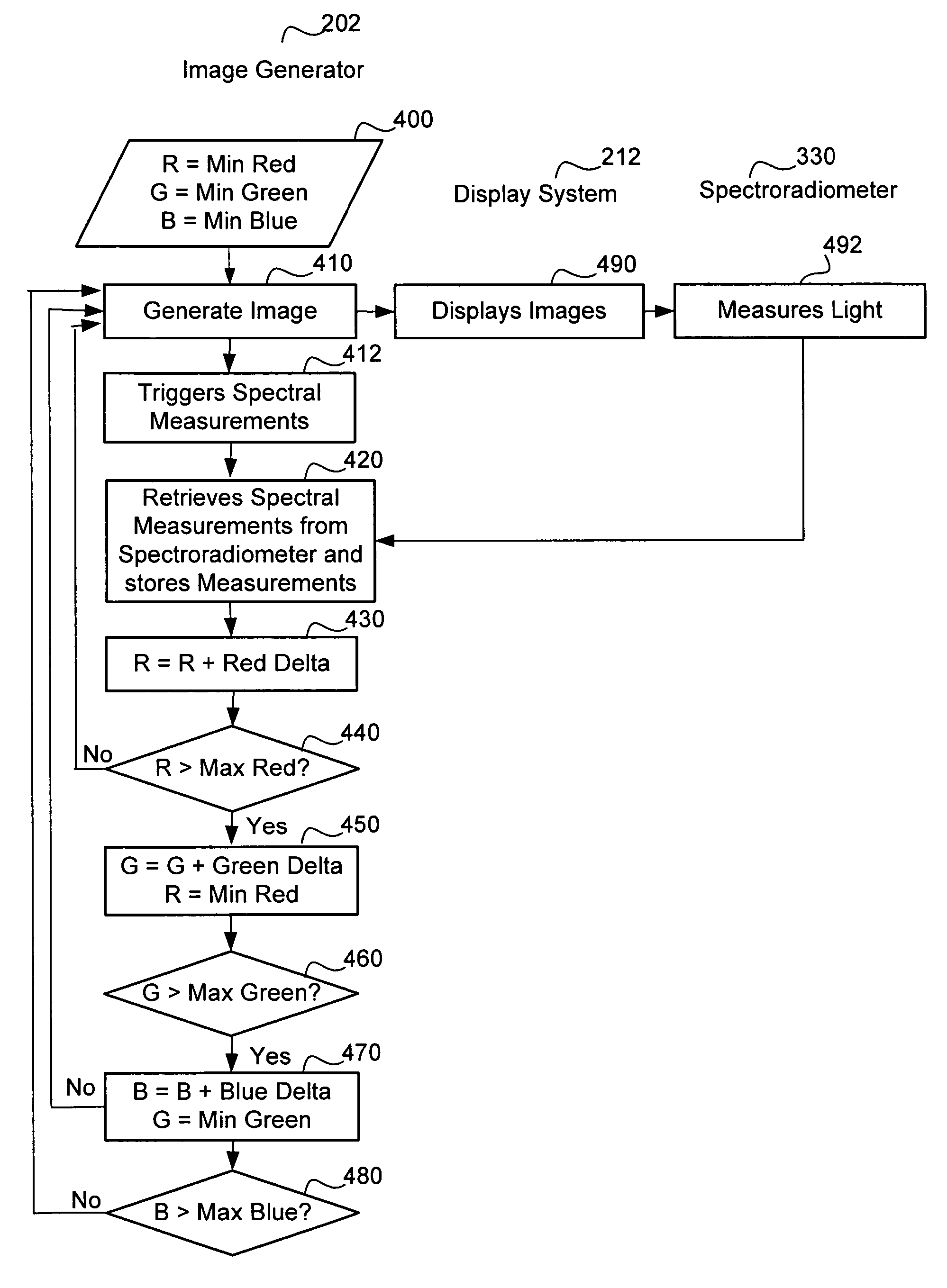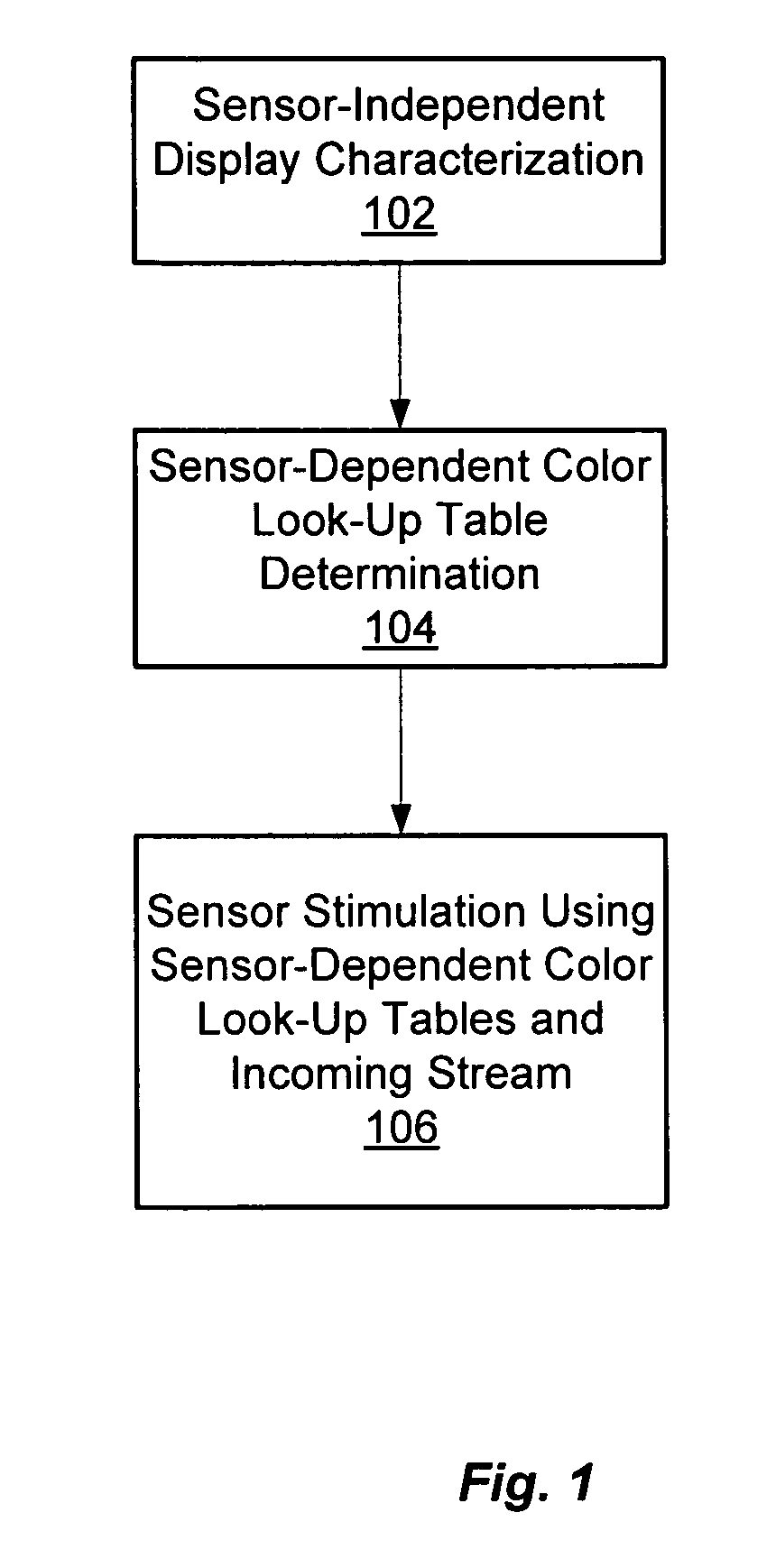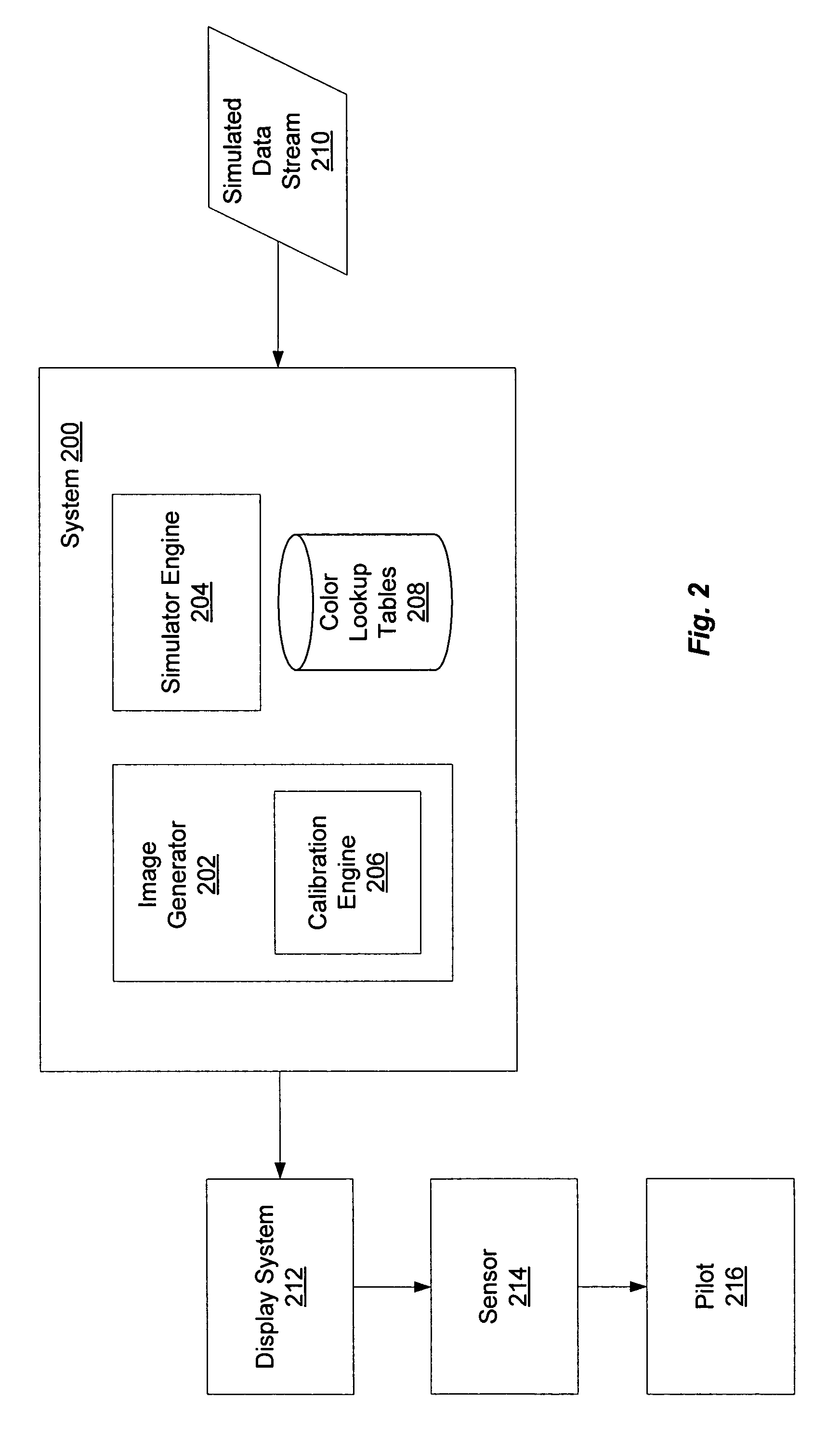Sensor and display-independent quantitative per-pixel stimulation system
a stimulation system and sensor technology, applied in the field of sensor and display-independent quantitative per-pixel stimulation system, can solve the problems of pilot's experience using the simulator will differ, and the pilot cannot use actual vision-auction equipment during training
- Summary
- Abstract
- Description
- Claims
- Application Information
AI Technical Summary
Benefits of technology
Problems solved by technology
Method used
Image
Examples
Embodiment Construction
[0019]FIG. 1 illustrates three steps of a method for performing sensor and display-independent sensor stimulation. First, the display system that will be used in conjunction with the sensor is characterized 102 according to the particulars of its emissions. Next, sensor-dependent color lookup tables that map simulated luminance to stimulating color values are created 104. This mapping is specific to the display that has been characterized and to the sensor that will be used with the display. Finally, a simulated image stream is received by the present invention, and using the color lookup tables, for each luminance value provided in the stream, a set of RGB values (or other input values, depending on the display technology involved) is determined 106 that will produce the equivalent stimulated image on the display system. Those color values are then provided to the display system for use with the appropriate sensor. Each of these steps is described further below.
System Architecture
[...
PUM
 Login to View More
Login to View More Abstract
Description
Claims
Application Information
 Login to View More
Login to View More - R&D
- Intellectual Property
- Life Sciences
- Materials
- Tech Scout
- Unparalleled Data Quality
- Higher Quality Content
- 60% Fewer Hallucinations
Browse by: Latest US Patents, China's latest patents, Technical Efficacy Thesaurus, Application Domain, Technology Topic, Popular Technical Reports.
© 2025 PatSnap. All rights reserved.Legal|Privacy policy|Modern Slavery Act Transparency Statement|Sitemap|About US| Contact US: help@patsnap.com



